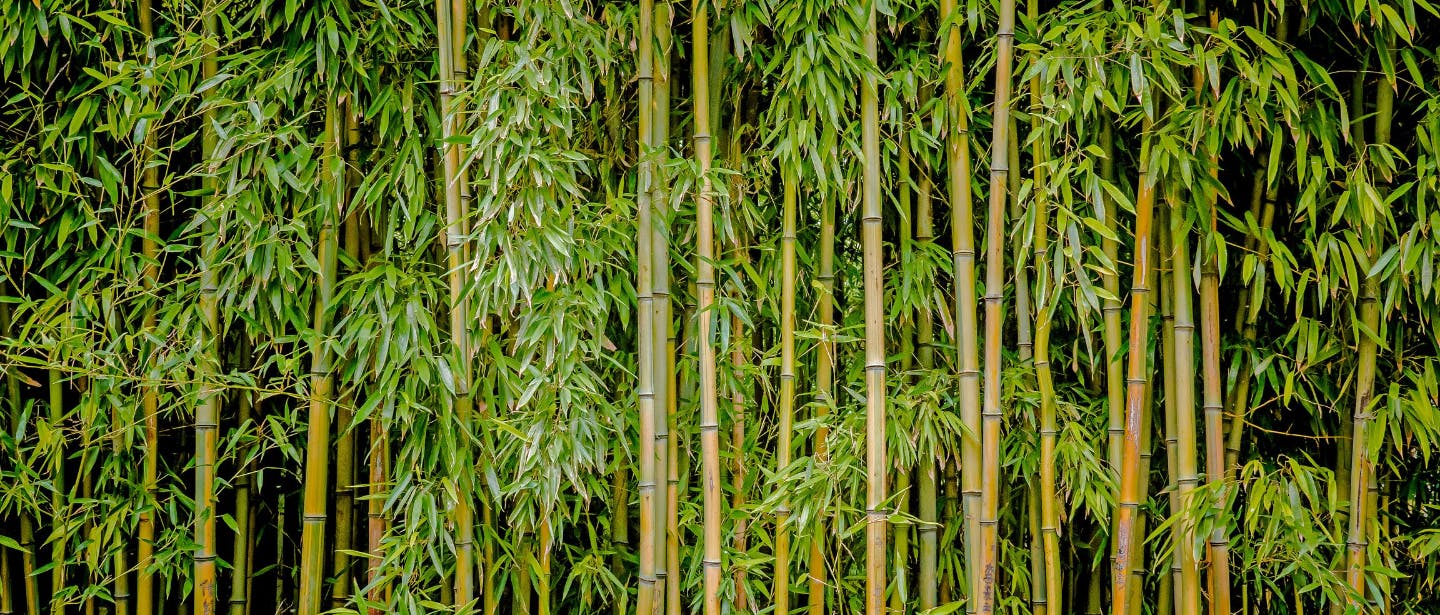Everyone knows the material bamboo. Perhaps you have held it yourself or seen a panda eat it. Bamboo is not unknown to us either and is widely used to make sustainable disposables. But what exactly is bamboo? Where does it come from? And how does it end up in your hands as a bowl or plate? Below are all the answers to these burning bamboo questions.
What is bamboo exactly?
Bamboo is originally a type of grass, but it's a bit different from the grass we know here in the Netherlands. Bamboo is a type of grass with a growth rate of a few millimeters to tens of centimeters per day. The growth rate depends on which type of bamboo you're looking at. Because bamboo grows so quickly, it is even considered a weed in some places. How cool is that; making sustainable disposables from weeds! Bamboo mainly grows in tropical and subtropical areas, so the chance of coming across a wild bamboo bush in the Netherlands is quite small.

What are the benefits of bamboo?
Bamboo is increasingly seen as the wonder plant of our planet. The grass grows so quickly and in such large numbers that it's almost a waste not to do anything with it. The first advantage is that bamboo is an infinite resource for now. In addition to the growth rate of bamboo, the land area on which the grass grows is also remarkable compared to other trees and plants. The growth area of bamboo is relatively small. Compared to, for example, cotton cultivation, the bamboo harvest is about 10 times as much on the same piece of land.
What makes bamboo even more of a wonder plant is the fact that the grass is air-purifying. Bamboo naturally absorbs more carbon dioxide and produces even more oxygen. The plant has an extremely efficient air purification system and produces 35% more oxygen than the average tree of the same size. Lastly: what makes bamboo so sustainable? Bamboo products are 100% natural because bamboo is grown without the use of pesticides or chemical fertilizers. This makes bamboo fiber 100% biodegradable and incredibly sustainable. In short, bamboo is an excellent material for sustainable products in many ways.
From bamboo to disposable
After 4 to 5 years, bamboo is fully grown and can be harvested. bamboo can be processed into fibers, which can be used to make clothes, but also sheet materiaal. First, the bamboo is sawn into long strips. The strips are then boiled in water to kill various parasites and bacteria. In addition to cleaning the bamboo, the strips also become bendable in the water. Various products can be formed with the bendable strips. By simply gluing bamboo strips together, thicker and thicker planks are formed, which can be used as timber panels for floors and furniture. Bamboo disposables are thus formed in a relatively simple way and are also 100% biodegradable. Did you know that most bamboo disposables can simply be put in the organic waste bin after use? It doesn't get much more sustainable than that!
Bamboo disposables at TakeAware
At TakeAware, we can't lag behind when it comes to this sustainable wonder plant. We sell bamboo straws, bamboo skewers, bamboo cutlery, and much more. All our bamboo products are 100% biodegradable and compostable according to EN13432. For those unfamiliar with the EN standard, here's a brief explanation: This standard makes companies aware of the biodegradability of the packaging they manufacture. The EN number provides a clear picture to the consumer of how truly biodegradable the product is. Terms such as compostable, bio-based, etc. are often used without justification. So the EN standard provides a clear standard that a product must meet.
In our digital shelves you will find various bamboo products of high quality and at a keen price. Do you want to know more about our bamboo products or service? Then reach out to us. Beside bamboo disposables we also sell products made of other sustainable materials, such as: sugarcane, palm leaf and cardboard.
